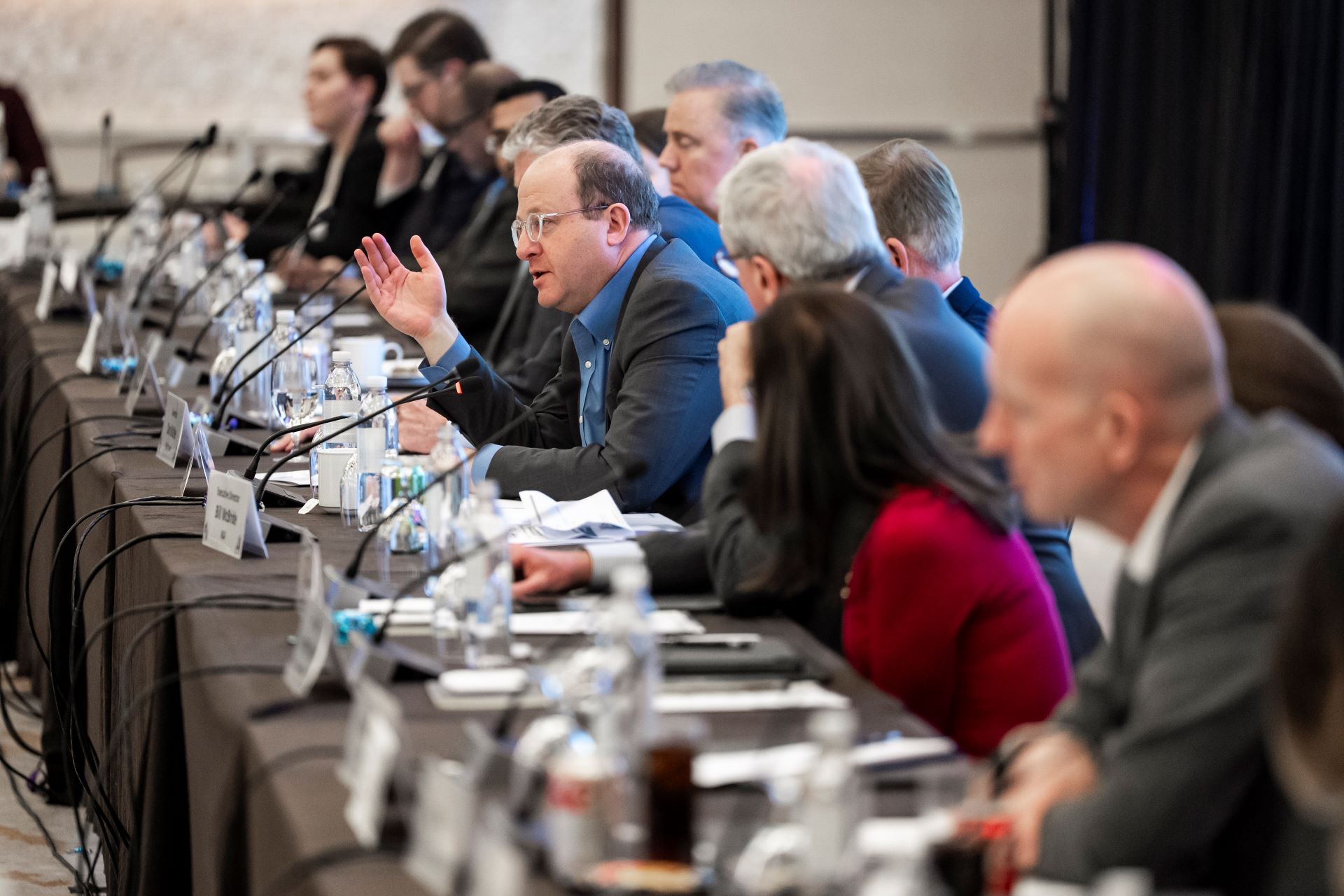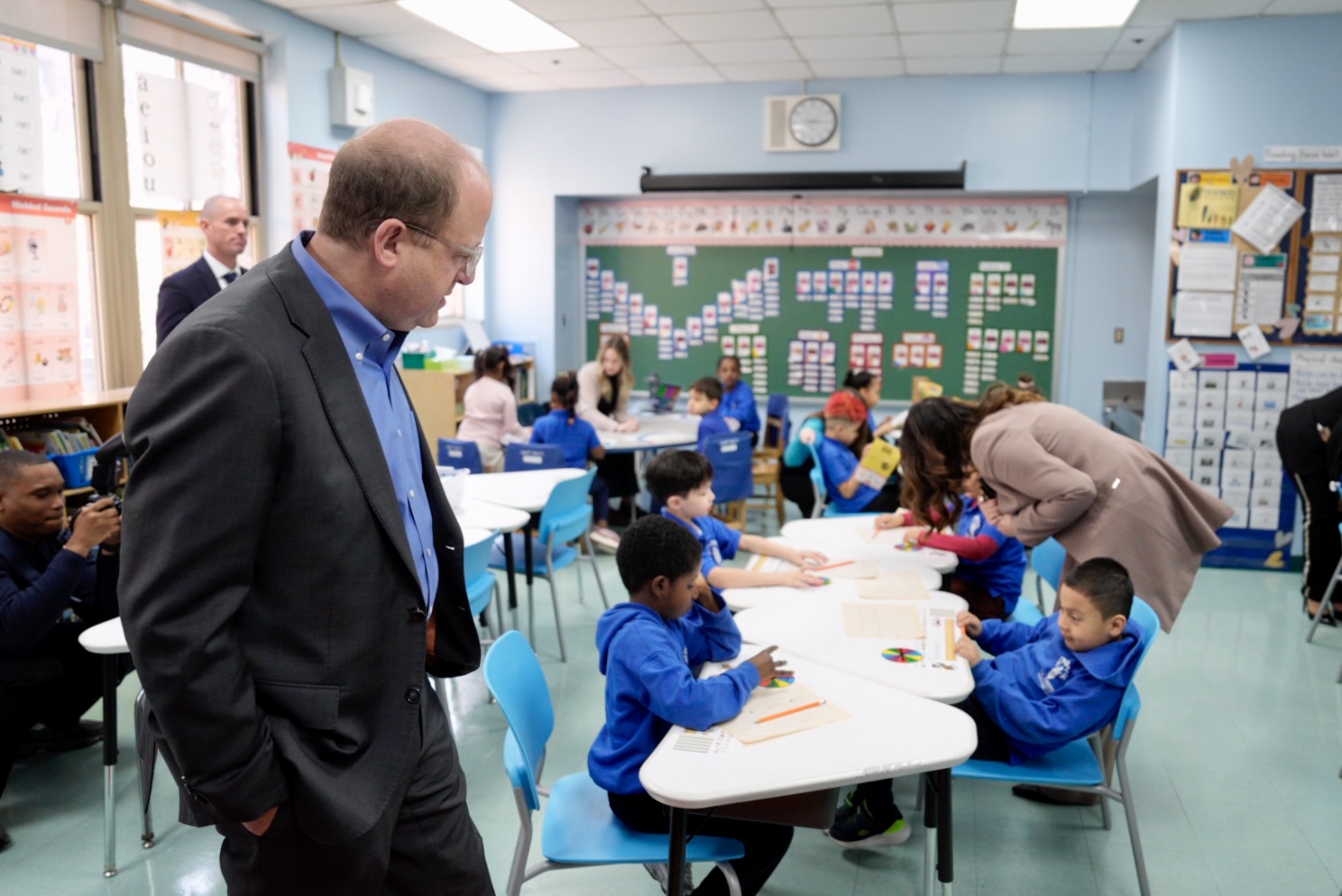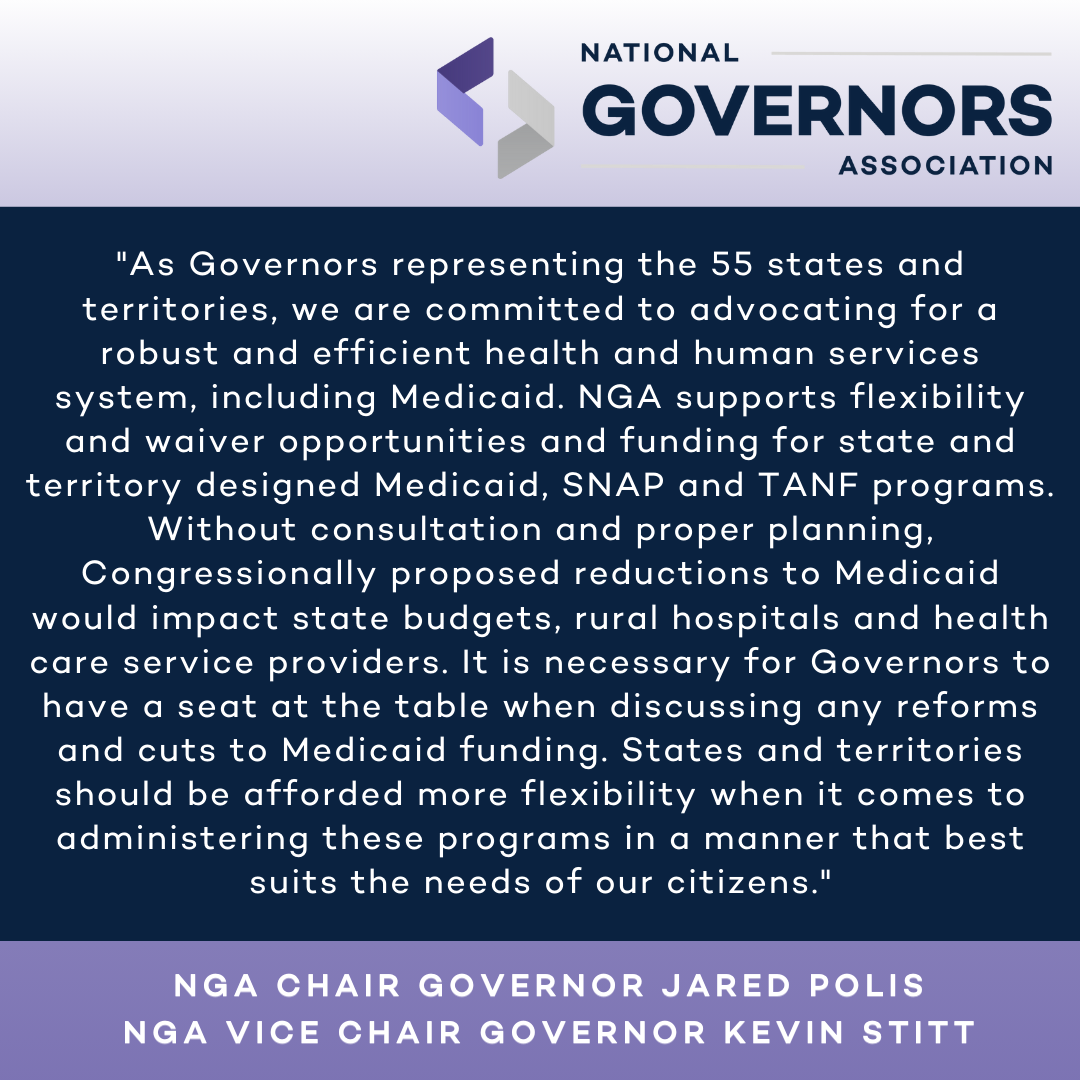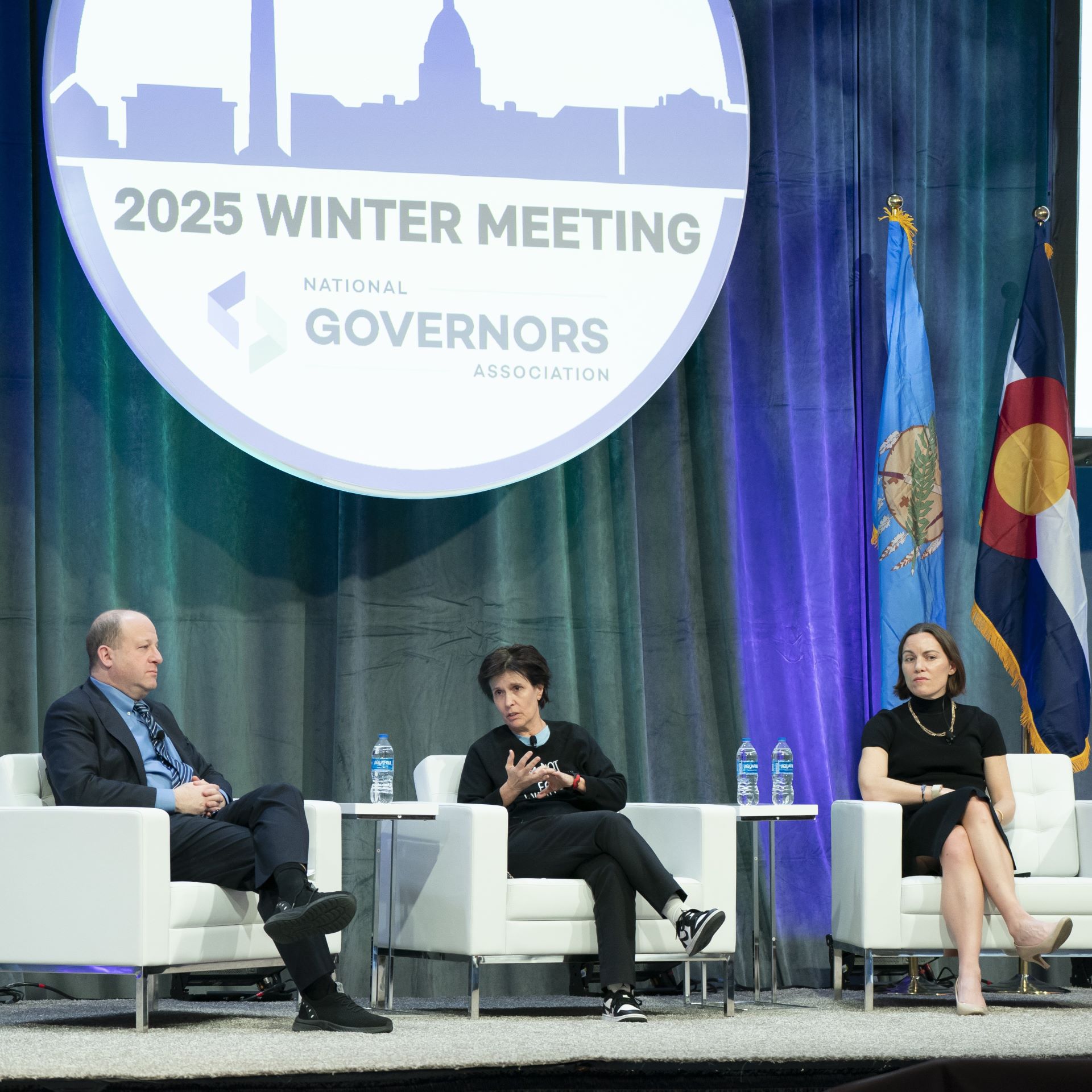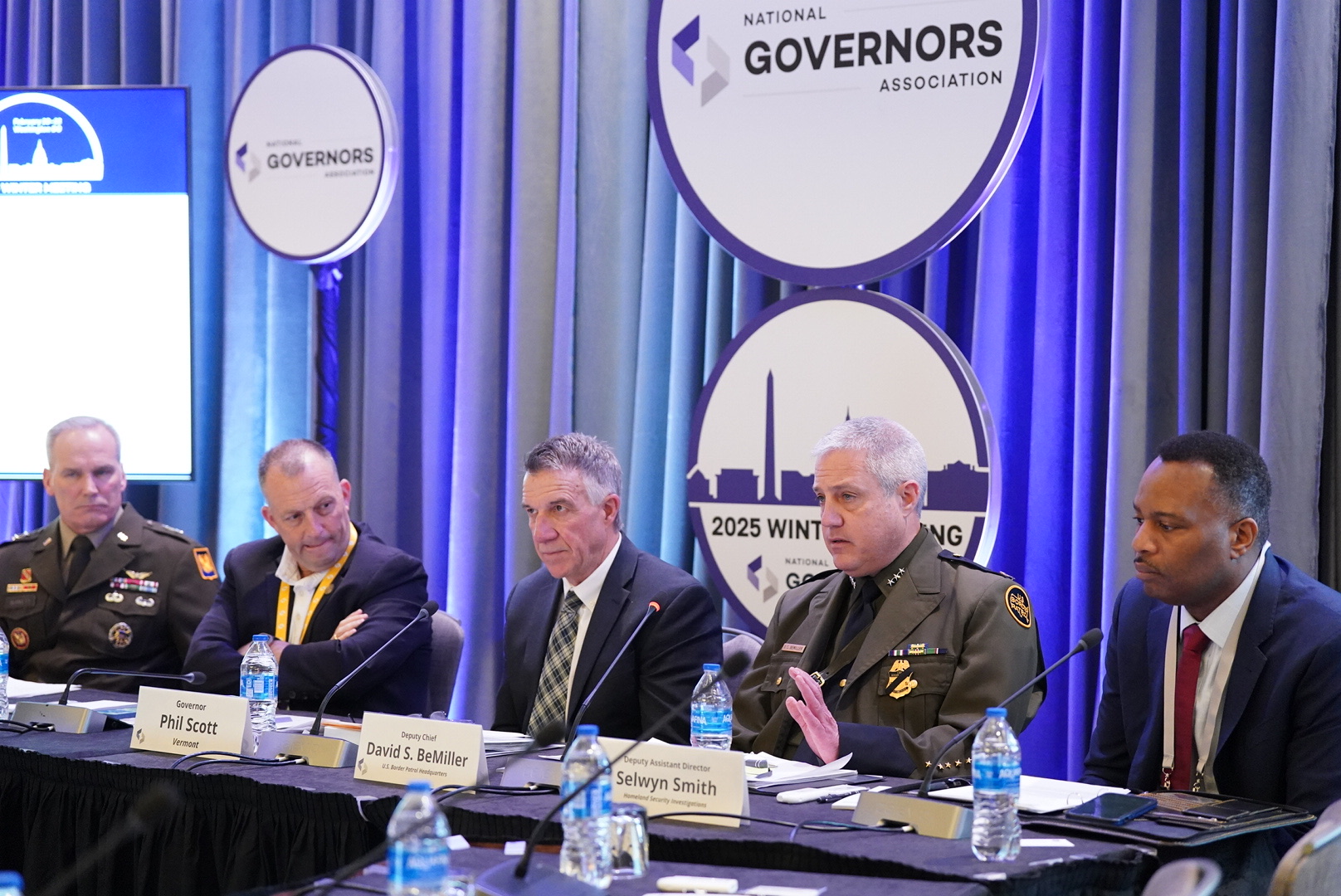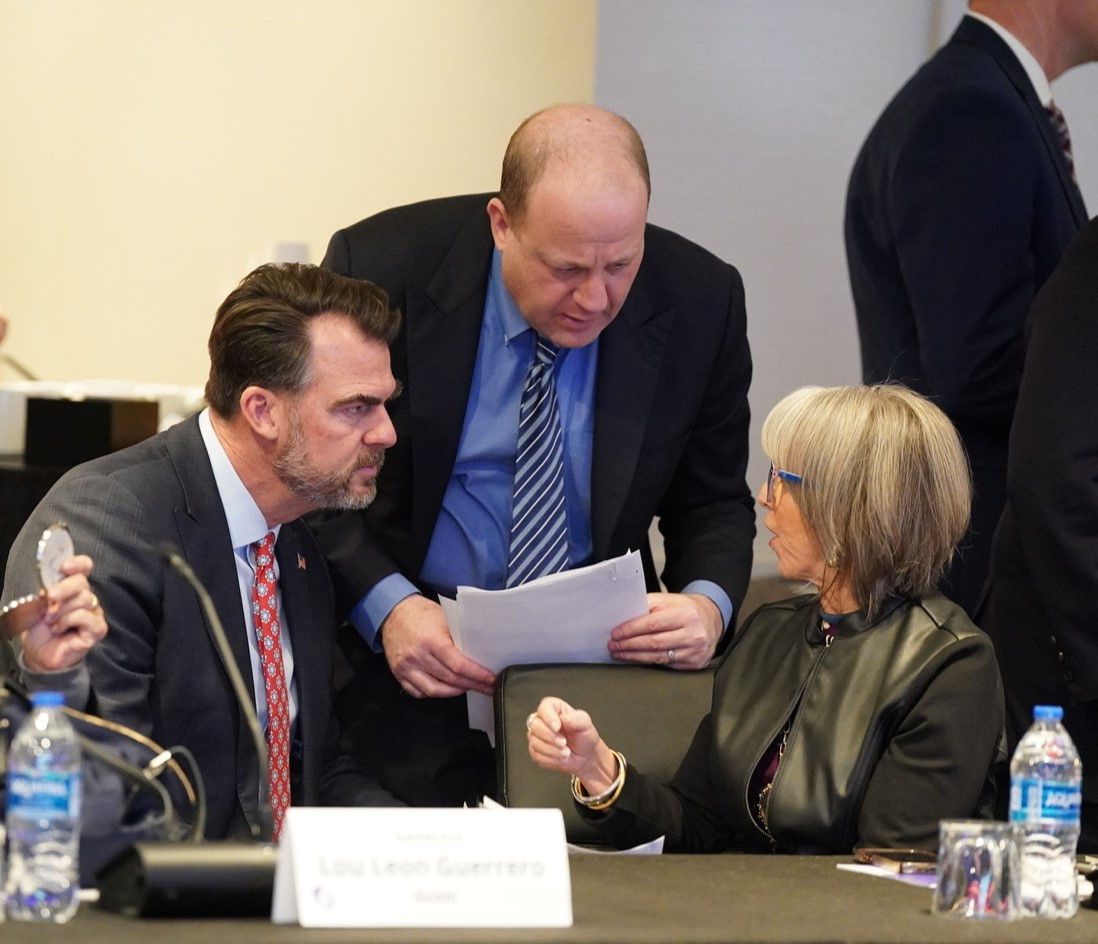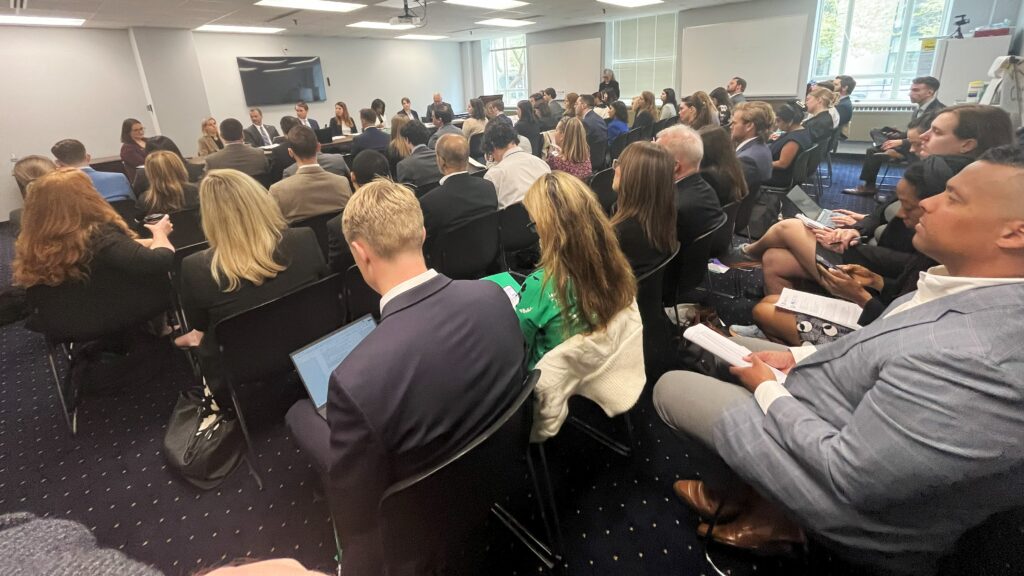
On April 10, 2024, NGA’s Economic Development and Revitalization Task Force and the Environmental Council of the States (ECOS) hosted a Congressional briefing to educate Congressional staff, Administration officials, and other stakeholders on the environmental priorities of states and territories.
Speakers included:
- Jordan Marsh, Director of Federal Affairs, South Carolina Governor’s Office on behalf of NGA’s Economic Development and Revitalization Task Force
- Jim McCleskey, Washington Representative, North Carolina Governor’s Office on behalf of NGA’s Economic Development and Revitalization Task Force
- Elizabeth Biser, Secretary, North Carolina Department of Environmental Quality, ECOS President
- Jess Byrne, Director, Idaho Department of Environmental Quality
- Leah Feldon, Director, Oregon Department of Environmental Quality, ECOS Air Committee Chair
- Karen Kudelko, Senior Deputy Director of Federal Affairs, Michigan Governor’s Office
- Serena McIlwain, Secretary, Maryland Department of the Environment, ECOS Environmental Justice Workgroup and Steering Committee Co-Chair
- Emma Pokon, Commissioner-Designee, Alaska Department of Environmental Conservation
The panel highlighted the Task Force’s 2024 federal priorities and ongoing advocacy, specifically:
- Protecting the Clean Water and Drinking Water State Revolving Funds (SRFs) – In September 2023, Kentucky Governor Andy Beshear and South Carolina Governor Henry McMaster, Co-Chairs of NGA’s Economic Development and Revitalization Task Force, sent a letter to Congressional leaders expressing concern about the recent practice of funding water infrastructure earmarks out of the SRF accounts, which significantly reduces the amount that is left to allocate to states and territories through capitalization grants. Over the last three fiscal years, states and territories have lost out on more than $3.7 billion in capitalization grant funding (a 45% cut from FY21 levels). Not only does this directly harm SRF programs year over year, but because earmarks are provided as grants rather than loans, SRF programs aren’t able to recapture the federal investments. Even if one considers total water funding flowing to states and territories, 47 states and all 5 territories have seen a net loss in water infrastructure funding in at least one of the accounts in at least one of the last fiscal years. Governors stand ready to work with Congress to find a solution to this urgent issue. NGA has published additional background information and impact data from Fiscal Year (FY) 2024.
- Prioritizing the Needs of States and Territories in the Water Resources Development Act (WRDA) 2024 Reauthorization – In March 2024, NGA sent a letter with the National Association of Counties, the National Conference of State Legislatures, the National League of Cities, and the United States Conference of Mayors urging WRDA’s timely and bipartisan reauthorization this year. The letter also encourages continued support for port and harbor maintenance and modernization as well as flooding mitigation and resilience.
- Addressing the Threats of Forever Chemicals (PFAS) – Governors are at the forefront of addressing PFAS contamination. During the briefing, participants discussed current efforts and needs for support in what continues to be costly cleanup efforts. This conversation was particularly timely given EPA’s finalization of Maximum Contaminant Level (MCL) regulation that morning.
Watch the briefing below, here are some key takeaways:
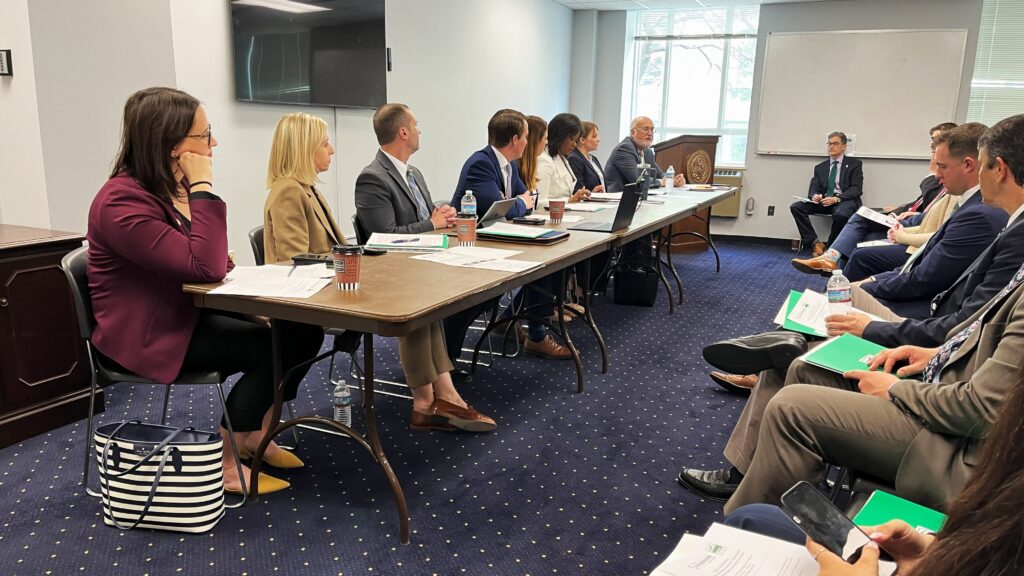
- “Governor McMaster believes in conservation and preservation of the environment but he also believes in a symbiotic relationship between that and economic development. We don’t find them as competing but how do they work together…clean air, safe drinking water, and well-managed land waste are all essential to healthy communities a thriving economy and a healthy life for all South Carolinians.” Jordan Marsh, South Carolina
- “Permitting for Maryland’s Department of the Environment is really one of my top priorities…it can stimulate the economy right when we start getting permits to be more automated…it literally just takes too long…we’re trying to clean it, lean it, get it better, so that businesses can get what they need faster.” Serena McIlwain, Maryland
- “States are the primary implementers of our nation’s environmental laws [and] the gap between what most states need as far as implementing environmental programs and what we actually have just continues to widen…A lot of the programs, particularly our core programs, that State Environmental agencies implement have direct bearing on economic development within the state, and all State Environmental agencies recognize that and we strive very hard to make sure that we are not impeding economic development simply because we’re either inefficient or because we do not have adequate capacity to implement our programs. As States we’ve done a lot to try to increase efficiency, streamlining processes, minimizing time that it takes for a lot of our activities but, as I mentioned, the gap of capacity and what the demands are still continues to widen. So there’s good news, it’s a relatively simple problem to address and it really does come down to funding” Jess Byrne, Idaho
- “The fundamental message we’re here to deliver on State Revolving Funds is: we are the S and we’re asking you to keep the R and the F in it…The revolving nature of these funds is undercut by money off the top that goes directly out as grants and doesn’t come back to the program to make it revolve.” Jim McCleskey, North Carolina
- “As we’re talking about items such as the State Revolving Funds having congressionally directed spending coming out…we are really concerned about making sure that we have ongoing support for States as we’re tackling not only an aging water infrastructure but also the new challenges that are emerging from emerging contaminants, which by the way are not so emerging, they’ve been around since the 1940s, this is not necessarily a new issue but it’s a new issue that we’re having to deal with to ensure that we’ve got water that meets these standards.” Elizabeth Biser, North Carolina
- “NGA does have a priority of working on PFAS in general. It’s a pretty umbrella priority in part because States handle it differently so a lot of what I’ll be talking about today is what we’re doing in Michigan and kind of some of the cutting edge ways we’re taking a look at things. We actually started sampling PFAS back in 2018 and we formed what’s called MPART, which is the Michigan PFAS Action Response Team. It was formed under an executive order at first but then it became a permanent body under another executive order in 2019. The goal of this body is to protect Public Health by identifying sources of PFAS to address PFAS contamination at the source and working with local health departments to protect people in areas where groundwater is impacted by PFAS. It’s unique in that it incorporates agencies across the state including our Department of Agriculture, Health and Human Services, Energy and Environment, DNR, also Licensing and Regulatory Affairs and of course our National Guard. So, it really reminds everyone one how much does touch PFAS…We’re really glad to see that across the Nation folks are really going to be prioritizing this important issue.” Karen Kudelko, Michigan
- “Finding and keeping knowledgeable staff is a real challenge and I think that as long as staff see that the funding isn’t necessarily stable that’s going to be a factor for them in terms of whether they stay at a state agency versus looking around to other opportunities and certainly in Oregon…State and local agencies really are the frontline for implementing the federal clean air programs…but a lot of times just that core funding…has not increased and it’s really a challenge to keep those staff that are very knowledgeable in those areas.” Leah Feldon, Oregon
- “If I could leave you all with one message today it is: federal programs should be federally funded. We as the states are implementing those programs, as Congress intended, where there’s an opportunity for the states to step forward and take on primary implementation, but not having an increase in the federal funding support for that in such a long time produces less effective programs.” Emma Pokon, Alaska

